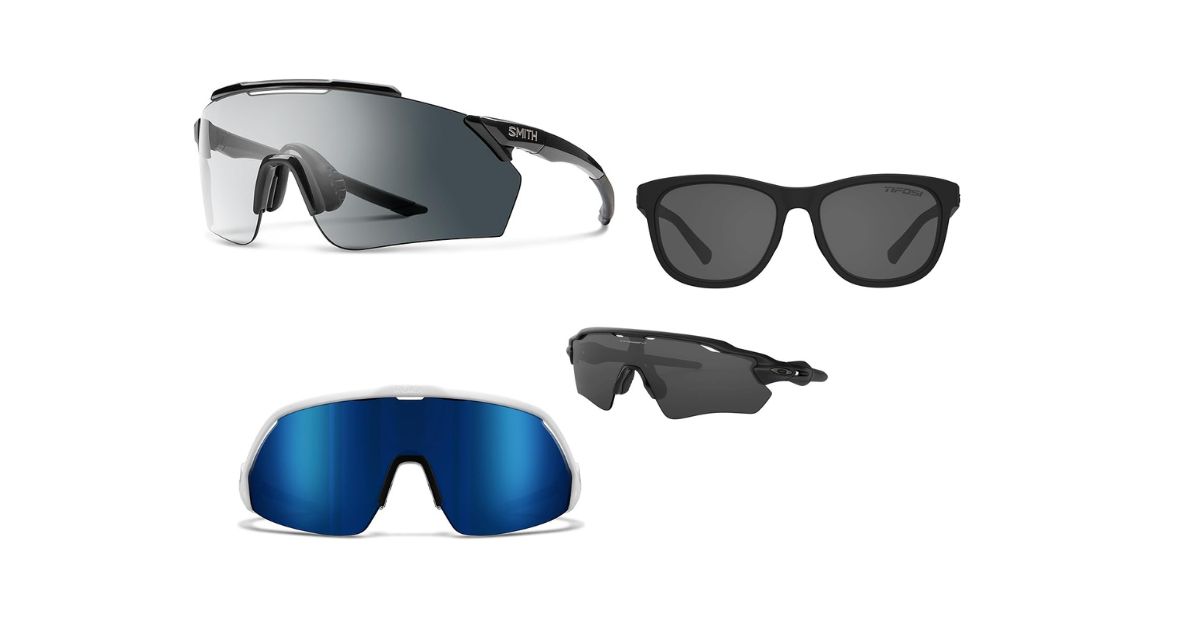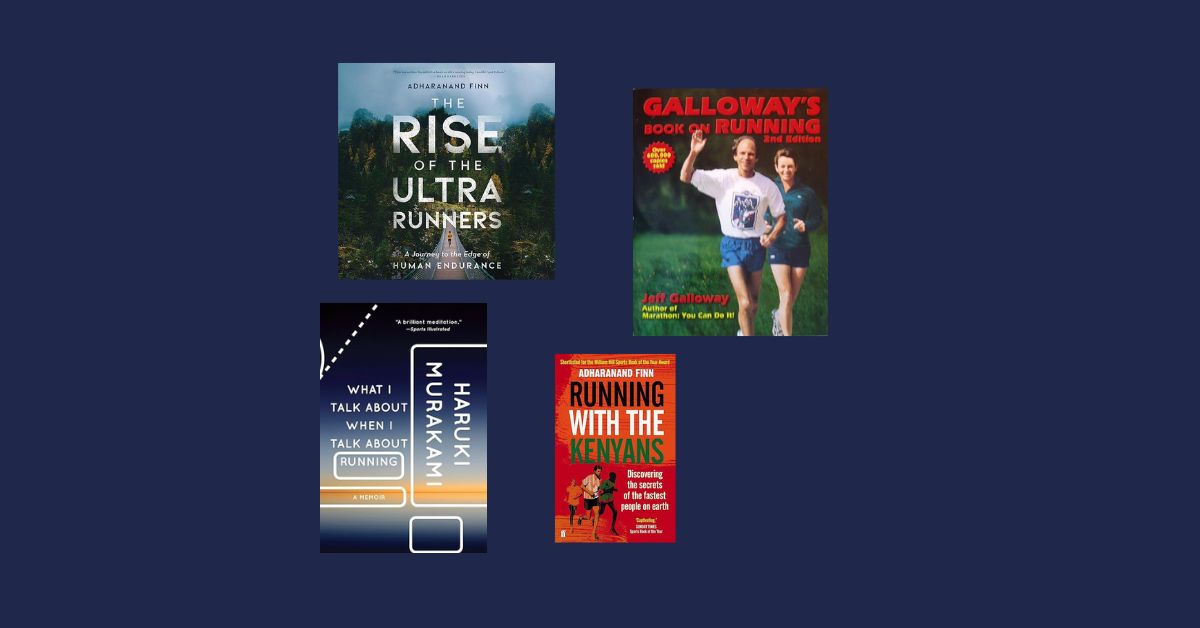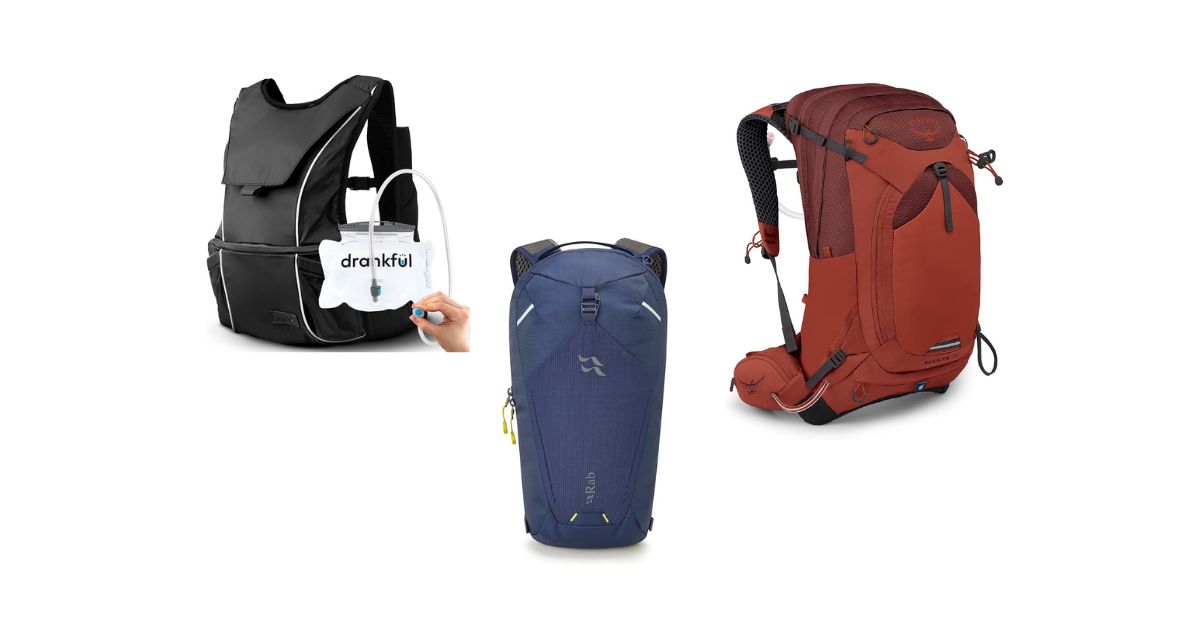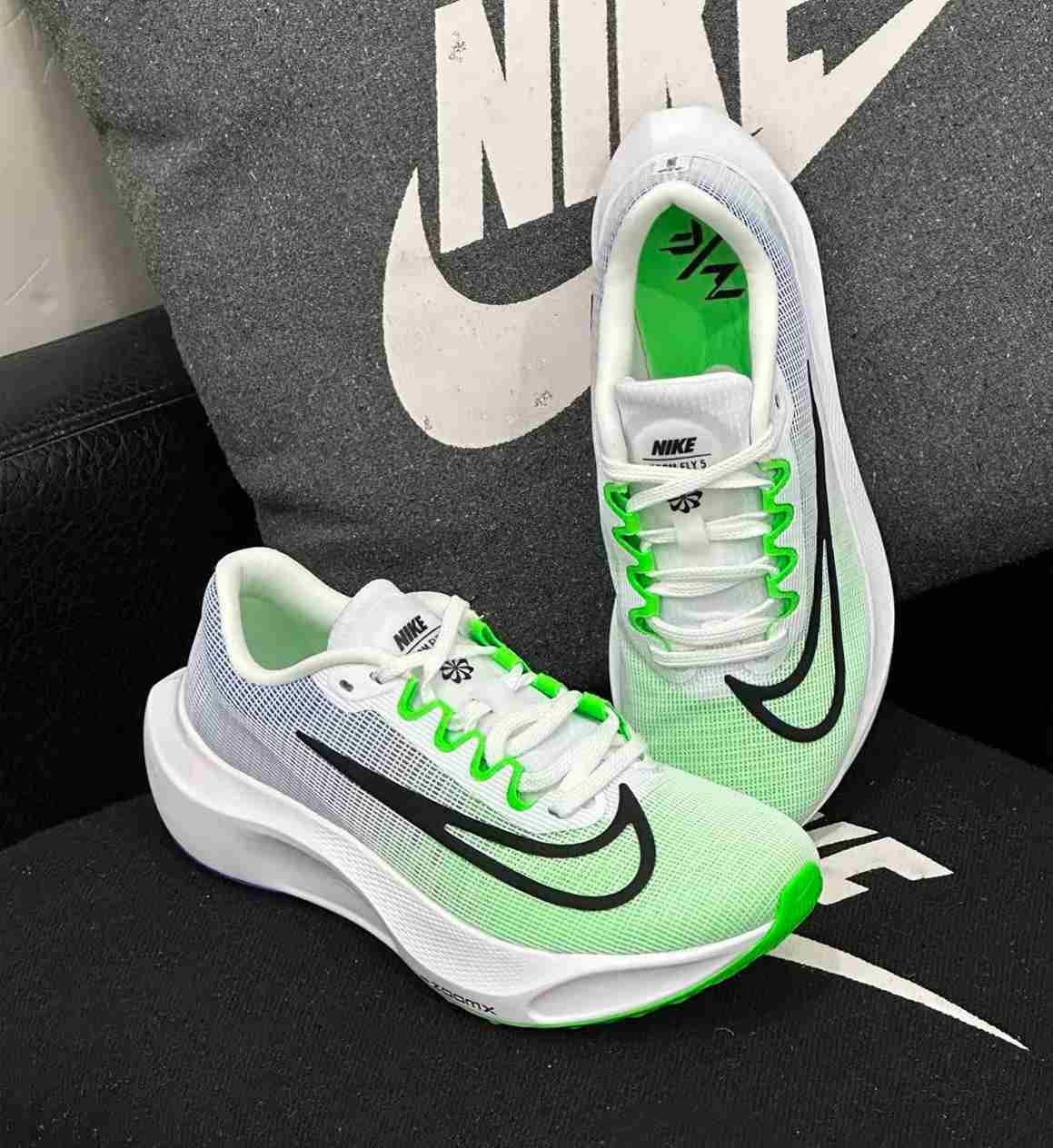Do you feel your feet roll too inward when you run or walk? This is called overpronation, which can lead to discomfort or injuries over time. The good news is that the right running shoes can help correct this and make your runs safer.
This guide will show you the 7 best running shoes for overpronation. These shoes are designed to give your feet the support they need so you can run longer and faster without worrying about pain.
Top 7 Picks of Best Running Shoes for Overpronation
Related Brands: Best Brooks Running Shoes
1
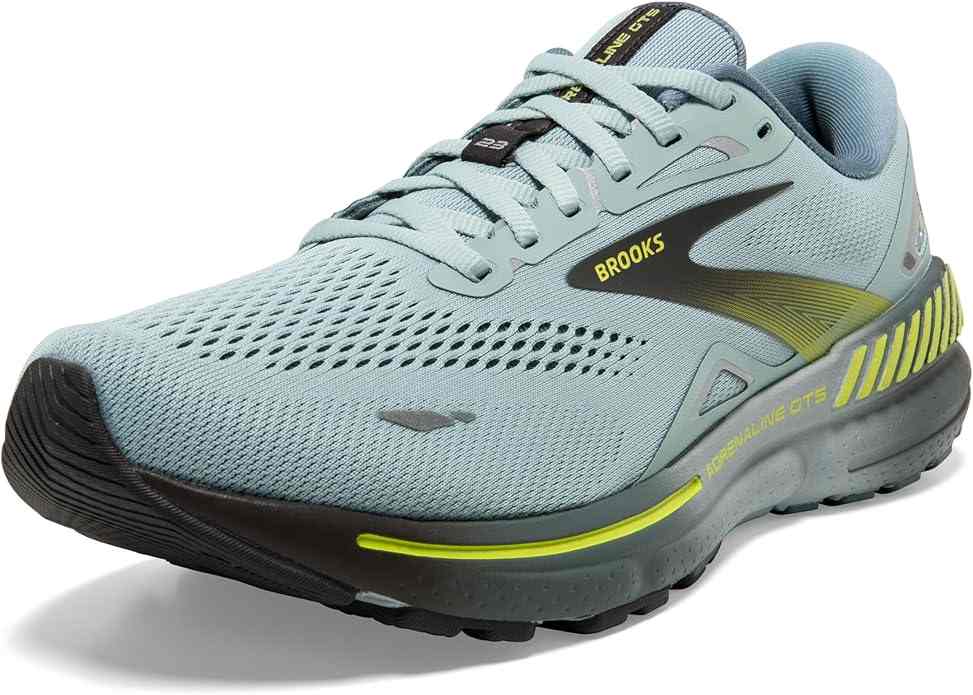
Best Overall – Brooks Adrenaline GTS 23
Pros
Cons
Overview
The Brooks Adrenaline GTS 23 is designed for people who overpronate. It offers strong support and stability while providing a smooth and comfortable ride.
With each step, the soft and wide midsole provides a secure, cushioned feel, helping to keep your feet steady. When measured, the midsole is 4.3 mm wider at the forefoot and 6.8 mm wider at the heel than most shoes. This gives you a solid base to land on, reducing the risk of rolling your foot too far inward. The shoe also features guide rails around the heel, which prevent too much movement. It scored 4 out of 5 on heel stiffness and overall stability tests.
Despite its strong support, the Adrenaline GTS 23 feels natural and flexible. It bends more quickly than other stability shoes – 41.8% more flexible – so running feels smooth and comfortable without stiffness.
One thing to note: If you land on the front part of your foot (forefoot striker), this shoe may not be the best fit. The cushioning in the forefoot is 2.8 mm thinner than average, which might feel less protective for that type of runner.
Overall, the Brooks Adrenaline GTS 23 is an excellent choice for heel or midfoot strikers who need a supportive yet comfortable running shoe.
2
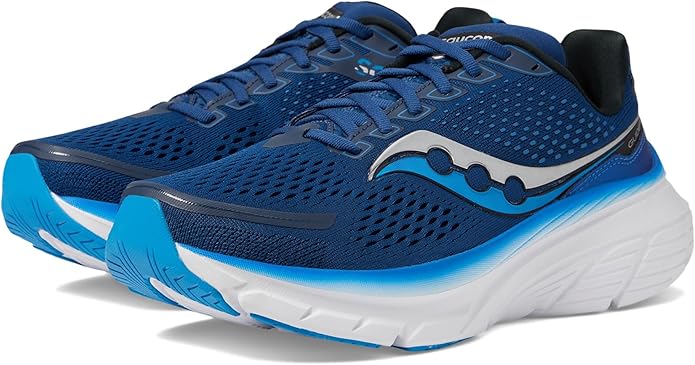
Best Daily Running – Saucony Guide 17
Pros
Cons
Overview
The Saucony Guide 17 is a great everyday running shoe for people who overpronate (when their feet roll inward too much). It’s designed to provide comfort and support without feeling heavy or stiff.
What makes Guide 17 special is how light it feels on your feet. It weighs only 9.7 oz (275g), which is lighter than most stability shoes (usually around 10.4 oz or 296g). This makes it easier to run longer without feeling weighed down. Plus, the shoe is 24.5% more flexible than the average stability shoe, so it doesn’t feel stiff or restrictive.
The cushioning is thick and soft, absorbing the impact of each step. The heel measures 34.9 mm high, and the forefoot is 27.9 mm, giving you plenty of protection no matter how your foot lands. The midsole is designed to keep you stable and balanced, making every step feel secure.
Guide 17 also uses multiple stability features to help guide your foot in the right direction. A curved sole (rocker) enables you to move forward smoothly, while wide midsole walls and a flared outsole keep your feet centered and steady. To give you a solid landing base, the midsole is extra wide—121 mm at the heel and 104.6 mm at the forefoot.
However, if you’re looking for a fast, performance-focused shoe, the Guide 17 may not be the best option. It’s perfect for easy, comfortable runs but doesn’t have the quick, responsive feel of a speed trainer.
3
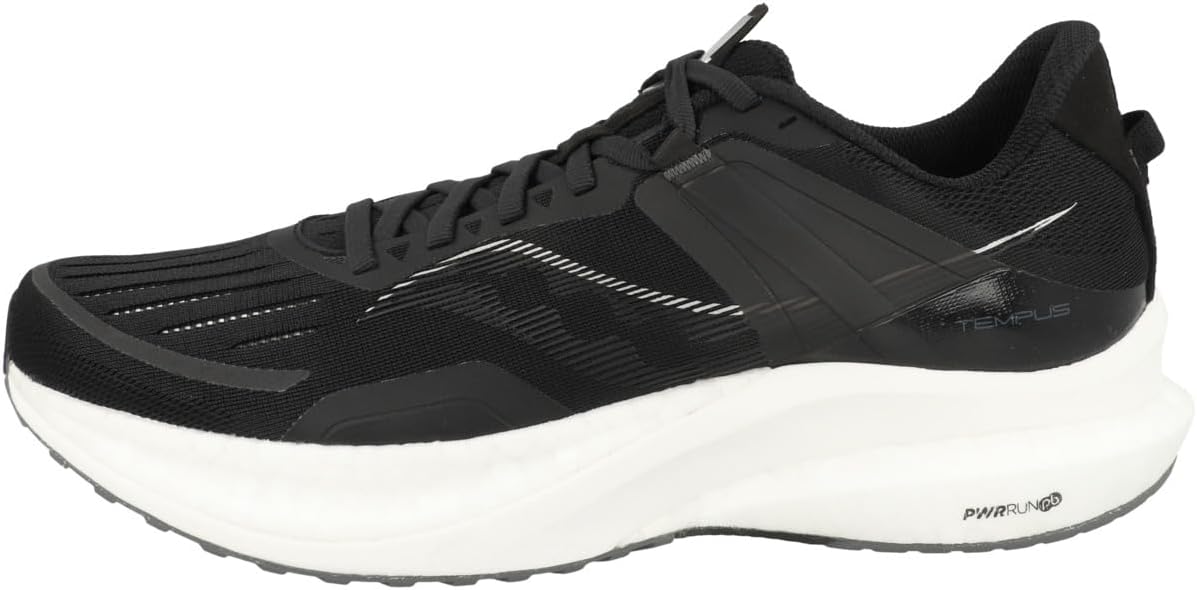
Best Speed Training – Saucony Tempus
Pros
Cons
Overview
The Saucony Tempus is a game-changer for runners who overpronate. It’s designed to provide speed, comfort, and support all in one lightweight shoe. Unlike some stability shoes, the Tempus guides your foot naturally without interrupting your running style. It’s perfect for fast-paced runs over any distance.
The midsole is what makes this shoe stand out. It’s soft, responsive, and absorbs impact well, even if your foot rolls inward. The curved rocker shape helps your foot roll forward smoothly and quickly, making it easier to pick up speed. The midsole is also wider than average, by 4.3 mm at the forefoot and 4.4 mm at the heel, which helps you stay stable with every step.
The outsole (bottom of the shoe) is built to last. It’s firmer (89.5 HC) than most shoes (average 80.0 HC), which can handle heavy use, even if you tend to wear down the inner part of your shoes. At just 9.4 oz (266 g), the Tempus is lighter than most stability shoes (the average is 10.5 oz or 298.3 g), making running feel faster and less tiring.
The downside is that the Saucony Tempus costs $160, more than the average stability shoe ($139) and other speed trainers ($145).
If you’re looking for a light, durable, and fast stability shoe and are willing to spend a little extra, the Saucony Tempus is an excellent choice.
4

Best Cushioned – ASICS Gel Kayano 31
Pros
Cons
Overview
The ASICS Gel Kayano 31 is one of the most cushioned and comfortable stability shoes for overpronating runners. After testing it during runs and in the lab, it’s clear that this shoe offers a soft, supportive ride with gentle landings and reliable stability.
The tall, plush cushioning makes long runs feel easier. The shoe features FF Blast+ foam and PureGEL in the heel, which adds extra softness when your foot strikes the ground. According to tests, the cushioning is 27.1% softer than the average shoe, and the heel stack height is an impressive 39.3 mm (compared to the average 33.7 mm). This results in a comfortable ride that protects your joints and absorbs impact.
Despite the thick cushion, the Gel Kayano 31 remains surprisingly stable. It uses ASICS’ 4D Guidance system, sidewalls, and a wide landing platform to keep your foot aligned and secure. The midsole is 122.1 mm wide at the heel and 97.6 mm at the forefoot, creating a steady base for every step.
Another pleasant surprise is the flexible midsole, which adapts to your movements despite the thick foam. The shoe is 14.4% more flexible than the average stability shoe, making runs feel more natural.
The downside is that the Gel Kayano 31 is heavier than most stability shoes, weighing 10.4 oz (295g). If you prefer lightweight running shoes, this might feel too bulky.
The ASICS Gel Kayano 31 is an excellent choice for runners seeking maximum cushioning and reliable support, although it is not the lightest option.
5
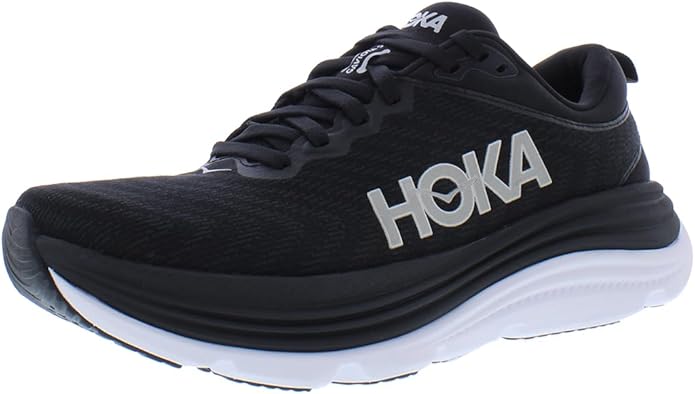
Best for Long Distance – Hoka Gaviota 5
Pros
Cons
Overview
The Hoka Gaviota 5 is one of the best long-distance shoes for overpronators, delivering unmatched cushioning and support for extended runs. Its soft, plush ride helps runners feel like they’re gliding over the pavement, making it easy to cover miles without discomfort.
The shoe features a tall, cushioned stack measuring 34.9 mm at the heel and 32.7 mm at the forefoot, 1.5 mm and 8.2 mm higher than most running shoes. The midsole foam is 46% softer than average, offering a luxuriously soft and protective underfoot feel. This translates to less impact on joints, which is perfect for reducing long-run fatigue.
Despite its thick cushioning, the Gaviota 5 maintains excellent stability. Its wide midsole base – 125.1 mm at the forefoot (12 mm wider than average) – ensures that forefoot strikers stay balanced and secure with every step. Heel strikers will also appreciate the shoe’s extra-wide heel platform, which is 16 mm wider than average and provides steady landings and confidence on the run.
One unique feature of the Gaviota 5 is its low 2.2 mm drop, which favors forefoot strikers but still offers a cushioned and stable experience for all runners.
If you’re looking for a shoe that offers maximum comfort, plush cushioning, and reliable stability, the Hoka Gaviota 5 is hard to beat for long-distance running.
6
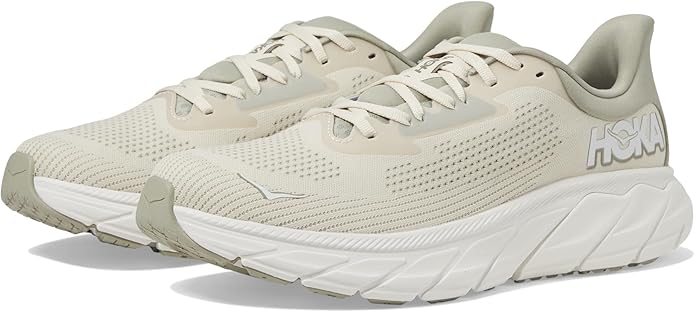
Best Lightweight – Hoka Arahi 7
Pros
Cons
Overview
The Hoka Arahi 7 is a lightweight and supportive running shoe for overpronators. It delivers comfort and stability for runners of all distances. Its ability to provide reliable support without feeling heavy makes it a top choice for runners seeking a stability shoe that feels effortless during long runs.
One of the Arahi 7’s biggest strengths is its lightweight build. Weighing just 9.4 oz (266g), it’s lighter than the average stability shoe (typically around 10.3 oz or 293g). This makes it easier to stay comfortable, even in the later stages of long-distance runs.
The shoe’s cushioned yet firm midsole helps absorb impact while providing extra support. Its stack height measures 34.2 mm at the heel and 27.9 mm at the forefoot, giving it plenty of cushioning to soften landings. The midsole is 13.7% denser than average, adding firmness to enhance stability and ensure a confident, secure stride.
For even more support, the Arahi 7 features a stiff J-frame design that extends along the side of the midsole and wraps around the heel. This feature helps prevent excessive inward rolling (overpronation) and keeps the foot aligned. The wider base—7.2 mm broader than average at the forefoot and heel—further enhances stability, providing a solid platform for landing and pushing off.
However, the Arahi 7’s upper material lacks breathability. The shoe can feel hot on warm days, increasing the risk of hotspots and blisters
The Hoka Arahi 7 is a light, stable, and supportive option for overpronators, ideal for long-distance running. However, runners in hot climates may consider shoes with better ventilation.
7
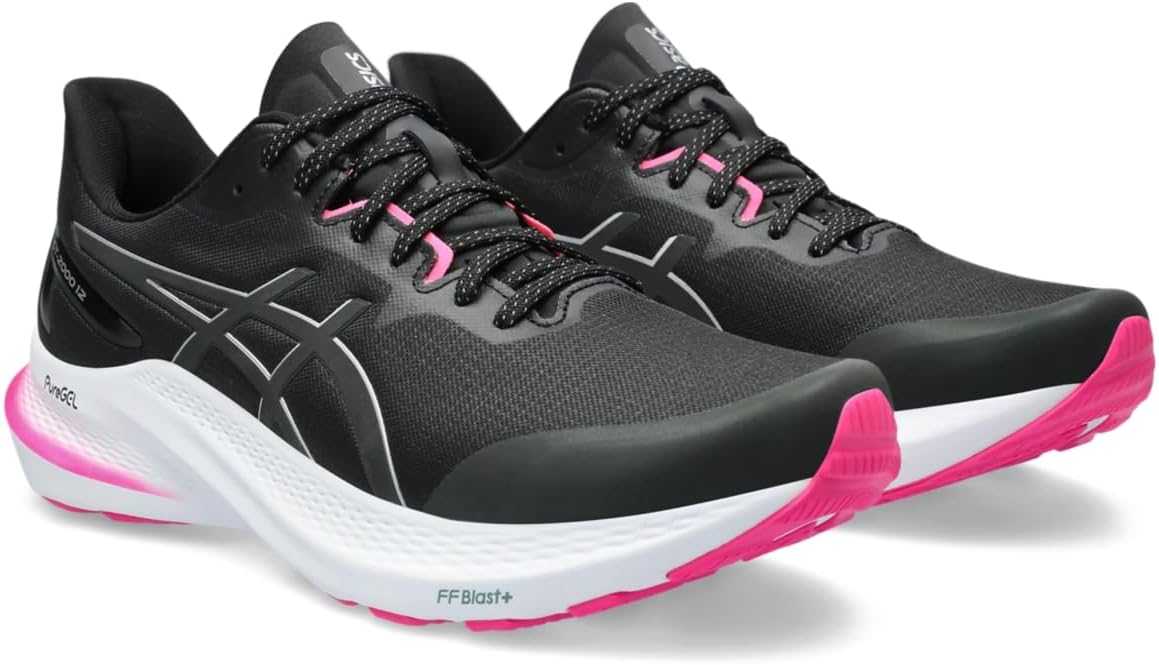
Best Value – ASICS GT 1000 12
Pros
Cons
Overview
The ASICS GT 1000 12 is a top choice for overpronators looking for stability and comfort at an affordable price. At $100, it delivers exceptional value compared to the average stability shoe, which typically costs around $139.
One of the standout features is the soft Flytefoam midsole, which is 46.9% softer than average, providing a cushioned and supportive feel with every step. The GEL cushioning in the heel absorbs shock and helps ensure steady, comfortable landings. Unlike many stiff stability shoes, the GT 1000 12 is highly flexible – 60.4% more bendable than average – making it comfortable for various running styles and distances.
Durability is another strength. The outsole rubber is 4.8 mm thick, offering more protection than the average shoe. It is also softer (74.8 HC) for better grip and enhanced traction on different surfaces.
The shoe is also lightweight at 9.6 oz (271g), which is lighter than most stability shoes that typically weigh over 10 oz (283g). Its upper is breathable and comfortable, scoring a perfect 5/5 in breathability tests.
However, while the GT 1000 12 excels in comfort and stability, runners looking for a springy, high-energy ride might find the midsole lacking responsiveness.
The ASICS GT 1000 12 is a durable, cushioned, and budget-friendly stability shoe. It is perfect for everyday runs and long-distance comfort.
How to Evaluate Running Shoes for Overpronation
When assessing running shoes in person, there are a few simple tests you can do:
Bend the Shoe – Try to bend the shoe in the middle. Stability shoes designed for overpronation will feel stiff and resist bending in the arch area.
Twist the Shoe – Hold the shoe at the heel and forefoot, then twist it. A good stability shoe won’t twist easily, preventing excessive foot movement.
Check the Outsole – Look for a design that offers maximum ground contact with fewer cutouts. More contact with the ground means better control and stability.
Squeeze the Heel Counter – Press the back of the shoe (heel area). Overpronation shoes typically have a firm, stiff heel counter to keep your heel secure and prevent unwanted movement.
Key Features of Overpronation Running Shoes:
Stiff Heel Counter and Padded Heel Collar – provide ankle support and keep the heel from rolling inward.
Dual-Density Midsole – A firmer foam on the inner side (medial side) prevents overpronation, while softer foam closer to the foot adds comfort. Some shoes also include a stiff plate in the midsole for extra support.
Heel Bevel – A slightly curved heel helps promote smoother landings.
Side Walls – Raised side walls around the midsole help guide the foot and prevent it from rolling inward.
Solid Outsole – Overpronation shoes have an outsole with minimal cutouts, prioritizing ground contact over weight reduction.
Forefoot Flare – A wider forefoot area increases stability and reduces the risk of rolling.
Heel Flare – A broad, flared heel adds support and stability during landings.
Stability at Different Paces:
Overpronators require less stability at higher speeds. This is because when running faster (during races or speed sessions), the foot spends less time on the ground.
As a result, tempo and race shoes often lack heavy stability features and focus more on speed and flexibility. However, some of these shoes may feel unstable and might require an adjustment period for overpronators.

